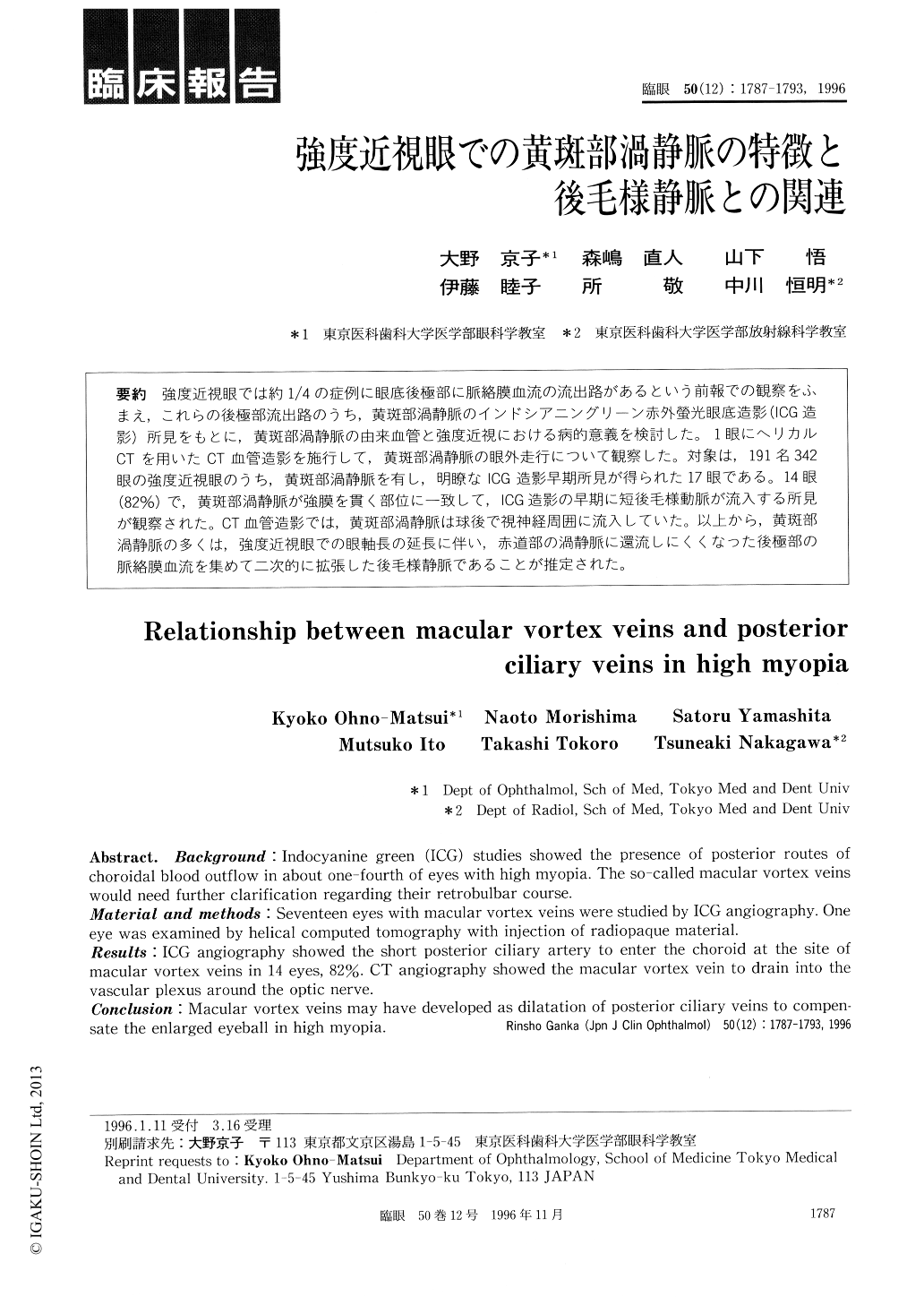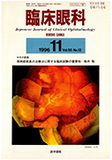Japanese
English
- 有料閲覧
- Abstract 文献概要
- 1ページ目 Look Inside
強度近視眼では約1/4の症例に眼底後極部に脈絡膜血流の流出路があるという前報での観察をふまえ,これらの後極部流出路のうち,黄斑部渦静脈のインドシアニングリーン赤外螢光眼底造影(ICG造影)所見をもとに,黄斑部渦静脈の由来血管と強度近視における病的意義を検討した。1眼にヘリカルCTを用いたCT血管造影を施行して,黄斑部渦静脈の眼外走行について観察した。対象は,191名342眼の強度近視眼のうち,黄斑部渦静脈を有し,明瞭なICG造影早期所見が得られた17眼である。14眼(82%)で,黄斑部渦静脈が強膜を貫く部位に一致して,ICG造影の早期に短後毛様動脈が流入する所見が観察された。CT血管造影では,黄斑部渦静脈は球後で視神経周囲に流入していた。以上から,黄斑部渦静脈の多くは,強度近視眼での眼軸長の延長に伴い,赤道部の渦静脈に還流しにくくなった後極部の脈絡膜血流を集めて二次的に拡張した後毛様静脈であることが推定された。
Background: Indocyanine green (ICG) studies showed the presence of posterior routes of choroidal blood outflow in about one-fourth of eyes with high myopia. The so-called macular vortex veins would need further clarification regarding their retrobulbar course.
Material and methods: Seventeen eyes with macular vortex veins were studied by ICG angiography. One eye was examined by helical computed tomography with injection of radiopaque material.Results: ICG angiography showed the short posterior ciliary artery to enter the choroid at the site of macular vortex veins in 14 eyes, 82%. CT angiography showed the macular vortex vein to drain into the vascular plexus around the optic nerve.
Conclusion: Macular vortex veins may have developed as dilatation of posterior ciliary veins to compen-sate the enlarged eyeball in high myopia.

Copyright © 1996, Igaku-Shoin Ltd. All rights reserved.


